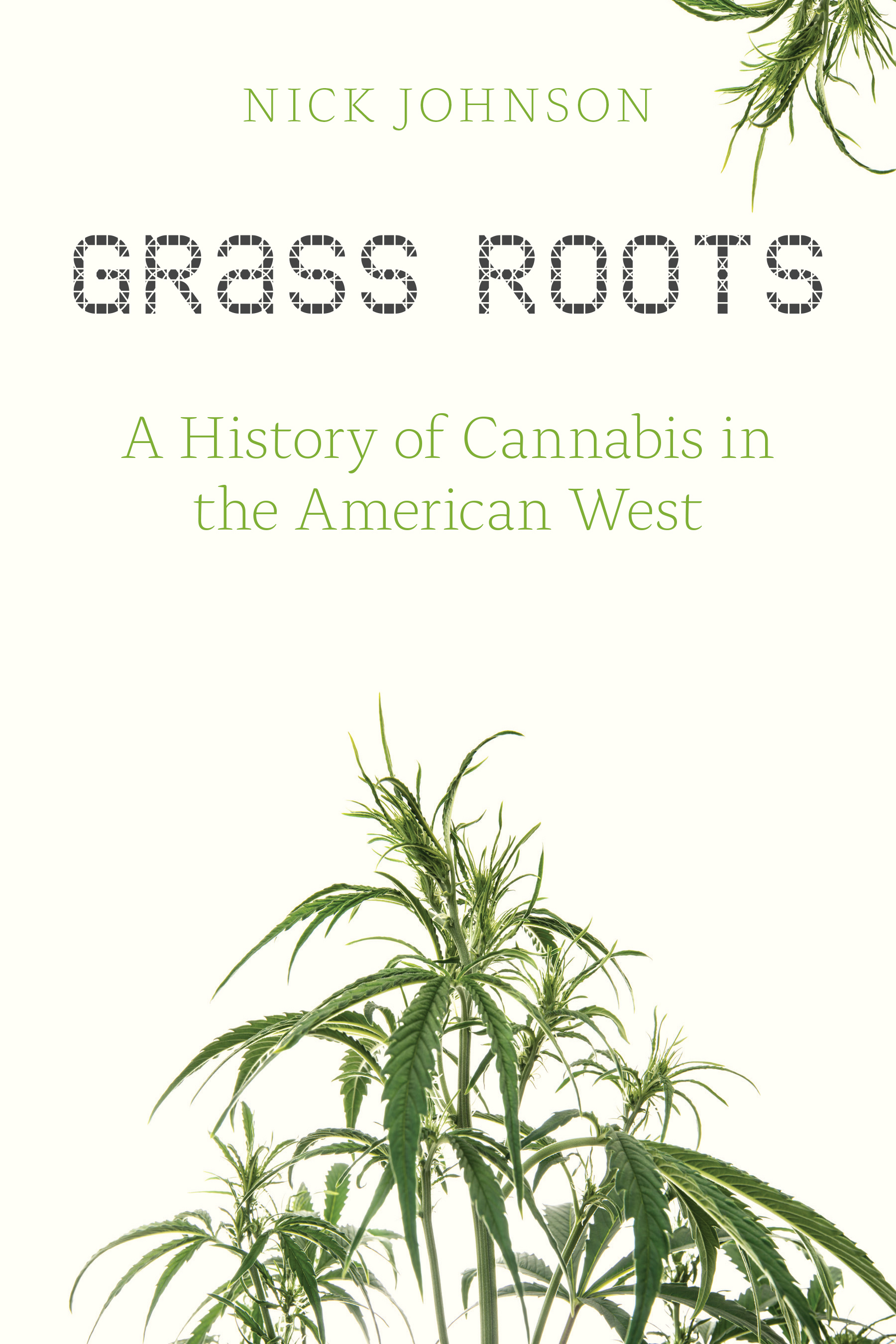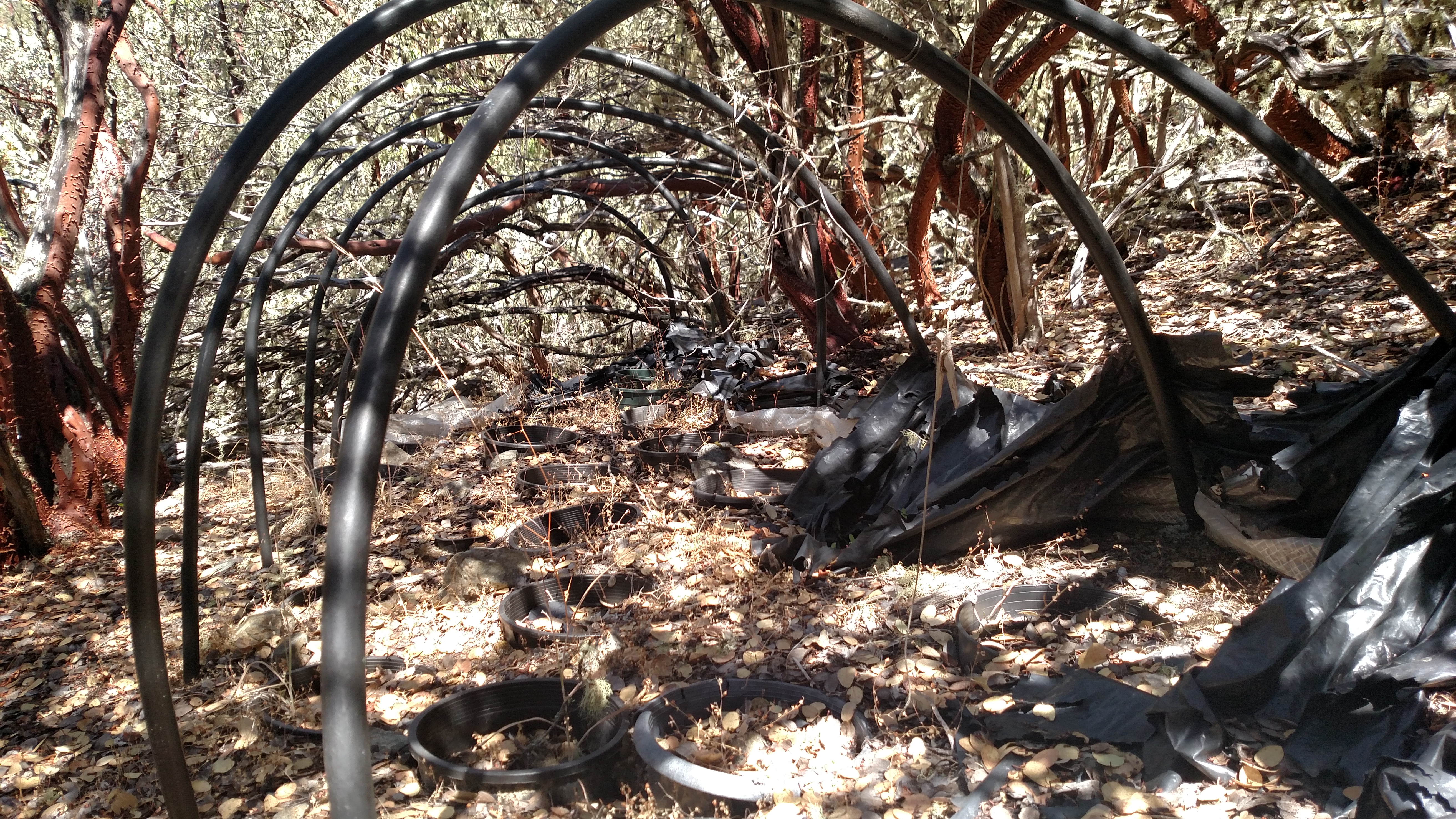It is easy to associate California with cannabis history. But Nick Johnson, author of Grass Roots: A History of Cannabis in the American West, emphasizes the rich history of cannabis in Oregon in today’s blog post. While his book explores the negative environmental impact and legacy of marijuana prohibition in the West, Nick credits Oregon with being one of the most environmentally friendly states for cannabis production. He also suggests that Oregon’s legacy of ballot initiatives as a legislative mode made re-legalization possible in many of the western states. So, to coin a phrase: Is it Beaver State or Reefer State? Read on to find out!
______________
 When it comes to the long and controversial history of cannabis in the United States, California gets a lot of attention, for obvious reasons. There’s the Emerald Triangle, the countercultural mecca of San Francisco, and the Bay Area medical movement that eventually led to Proposition 215, which made the Golden State the first to re-legalize medical cannabis after more than eighty years of national prohibition.
When it comes to the long and controversial history of cannabis in the United States, California gets a lot of attention, for obvious reasons. There’s the Emerald Triangle, the countercultural mecca of San Francisco, and the Bay Area medical movement that eventually led to Proposition 215, which made the Golden State the first to re-legalize medical cannabis after more than eighty years of national prohibition.
Those events and many others have understandably created the impression that California is, as journalist Peter Hecht put it, “America’s marijuana epicenter.” But anyone seeking to truly understand marijuana’s incredible story in the United States cannot ignore the plant’s history just over the border in Oregon. Like its neighbor to the south, the Beaver State has been home to many of the most important political, social, and biological events in the history of American cannabis.
Cannabis products arrived in Oregon with the first white immigrants, many of whom came in wagons covered by hemp canvas. It’s unclear when medicinal or drug cannabis first arrived, but by the late nineteenth century, medicinal cannabis tinctures were available in Oregon pharmacies. By 1898, the state’s farmers and agriculturalists were excited about the prospect of a local hemp industry, even though the national hemp industry had been in serious decline for several decades. Perhaps because of a lack of demand, industrial hemp never did take off in early-twentieth-century Oregon.
In 1904, in the throes of the Progressive Era, Oregonians passed the United States’ first ballot initiative, beginning their century-long love affair with direct democracy. Over the next 100 years, Oregonians drafted and voted on 384 ballot initiatives, by far the most in the United States. This normalized a process that would eventually allow for the re-legalization of cannabis in Oregon.
Meanwhile, as American anti-vice fervor reached a fever pitch in 1915, Portland’s Morning Oregonian reported an investigation into “the sale of ‘cannabis indica,’ otherwise called ‘hashish,’ a drug said to be rapidly gaining favor as a substitute for opium.” Later that year, the paper reported that several local drugstores were caught selling “packages of hashish” to “young boys.” Portland promptly restricted all sales of “hashish” in May 1915. In 1920, Portland resident Dolores Fernandes was caught with a “large fruit box” of drug cannabis, which by that time was already starting to be called “marijuana” based on its alleged association with Mexicans.
In 1923 the Oregon legislature responded to these and other incidents by outlawing the nonmedical distribution of cannabis. Around the same time, drug cannabis was falling out of favor as a medicine, as physicians and pharmacists struggled to find proper dosages and figure out the appropriate application for its medicinal properties. The federal government eventually outlawed all cannabis production with the Marihuana Tax Act of 1937.
Without a robust trade in either hemp or medical cannabis, the plant largely disappears from Oregon’s historical record until the counterculture of the 1960s. Hippies and other counterculturalists picked up the habit of marijuana smoking from the Beat Generation, which used the drug as a gateway to new ideas and a greater appreciation of music and the arts.
By the late 1960s, different groups of counterculturalists were starting their own, separate communities in rural places across Oregon. Some of the earliest communes included High Ridge Farm on the Illinois River, Sunnyridge in the Browntown area, and CRO Farm west of Eugene. By the early 1970s, communal groups convened in the southern Oregon locales of Applegate, Medford, Jacksonville, and Ashland.
While many of these communes withered over the course of the 1970s, the counterculture had firmly put down roots in Oregon. The university towns of the Willamette Valley and the rural hamlets of southern Oregon were particularly prominent hubs of countercultural activity, including marijuana use and cultivation. In 1970, Eugene resident Bill Drake typed out The Cultivator’s Handbook of Marijuana, the nation’s first guidebook exclusively dedicated to cannabis cultivation. Tailed by the FBI after he sold his first 500 copies, Drake eventually got a conservative publisher in the town of Florence, Oregon, to publish additional copies. Drake went on to pen “Cultivator’s Handbooks” for other controversial plants, such as tobacco and coca.
In 1973, amidst a rising rate of marijuana use by young, middle-class whites, Oregon became the first state to decriminalize cannabis possession. The new law reduced the penalties for possessing up to an ounce of cannabis to a $100 fine, instead of the extensive jail time required by earlier laws.
By the 1980s, southern Oregon’s warm climate, geographic isolation, and countercultural presence made it a hotbed for illegal marijuana farming. Growers there held annual harvest celebrations for the cannabis crop, and some even proudly labeled their crop “grown in Oregon.” “Marijuana culture was just everywhere,” remembers Richard Reames, a southern Oregon grower who has lived in the area since the 1980s. Reames used Robert Clarke’s Marijuana Botany to farm his own funky flowers, but after Bill Drake’s book, there were plenty more marijuana guides to choose from.
One was Tom Alexander’s Sinsemilla Tips, a magazine first published by typewriter in Corvallis in 1980. Alexander started the magazine after Corvallis police busted him for growing marijuana in 1979. The magazine published advice columns by growers, for growers, and sold ad space to garden supply shops and other businesses that cheekily sold lights, fertilizers, and other equipment to growers. By 1985, Sinsemilla Tips had a press run of 10,000 copies.
 Meanwhile, the medical marijuana movement that began in California’s Bay Area gradually made its way north, where more Oregonians began reacquainting themselves with marijuana’s medical potential. In 1998, two years after Californians passed Prop. 215, Oregonians approved Ballot Measure 67; after a seventy-five-year hiatus, medical marijuana was legal again in the Beaver State. Despite ongoing raids by law enforcement, Oregon growers continued to experiment with their marijuana crop; some of the most popular strains today, such as “trainwreck,” are reportedly the result of Oregonian ingenuity (although the origins of that strain in particular are disputed).
Meanwhile, the medical marijuana movement that began in California’s Bay Area gradually made its way north, where more Oregonians began reacquainting themselves with marijuana’s medical potential. In 1998, two years after Californians passed Prop. 215, Oregonians approved Ballot Measure 67; after a seventy-five-year hiatus, medical marijuana was legal again in the Beaver State. Despite ongoing raids by law enforcement, Oregon growers continued to experiment with their marijuana crop; some of the most popular strains today, such as “trainwreck,” are reportedly the result of Oregonian ingenuity (although the origins of that strain in particular are disputed).
Following victories for adult-use marijuana in Colorado and Washington in 2012, Oregonians again tapped into their rich history of direct democracy and passed Measure 91 in 2014. As of July 1, 2015, anyone in the state over the age of 21 can now buy or use marijuana. Thanks to legalization, industrial hemp is also back on the rise; as of 2017, more than 100 Oregon farmers have planned for some 1,300 acres of hemp. While far from perfect, Oregon’s marijuana program is also one of the most environmentally friendly to-date, as it allows outdoor cultivation, regulates pesticide use, and encourages sustainable cultivation via a publicly available list of best practices.
From hemp-covered wagons to resin-soaked sinsemilla, Oregon’s cannabis history demonstrates that the Beaver State has played an instrumental role in the dispersal of cannabis across the country and the rise of the modern marijuana movement. The state was home to the first decriminalization law, the first marijuana grower’s guide, and even the first major use of the ballot initiative—those living in states with legal marijuana today have Oregonians to thank for popularizing the mechanism by which the marijuana movement has met with so much success. Oregon has also been home to some of the most competent and innovative growers in the Pacific Northwest, making significant contributions to the West Coast’s reputation as the source of the best marijuana in the world. California may get most of the press, but the straight dope is that Oregon has been just as influential in the world of modern cannabis.
